With Upfood, you no fit hunger
TL;DR
We participated in a Techstars startup weekend event solved a challenge using a modified version of Google venture's design sprint process.
This is a case study that explains our process and results.
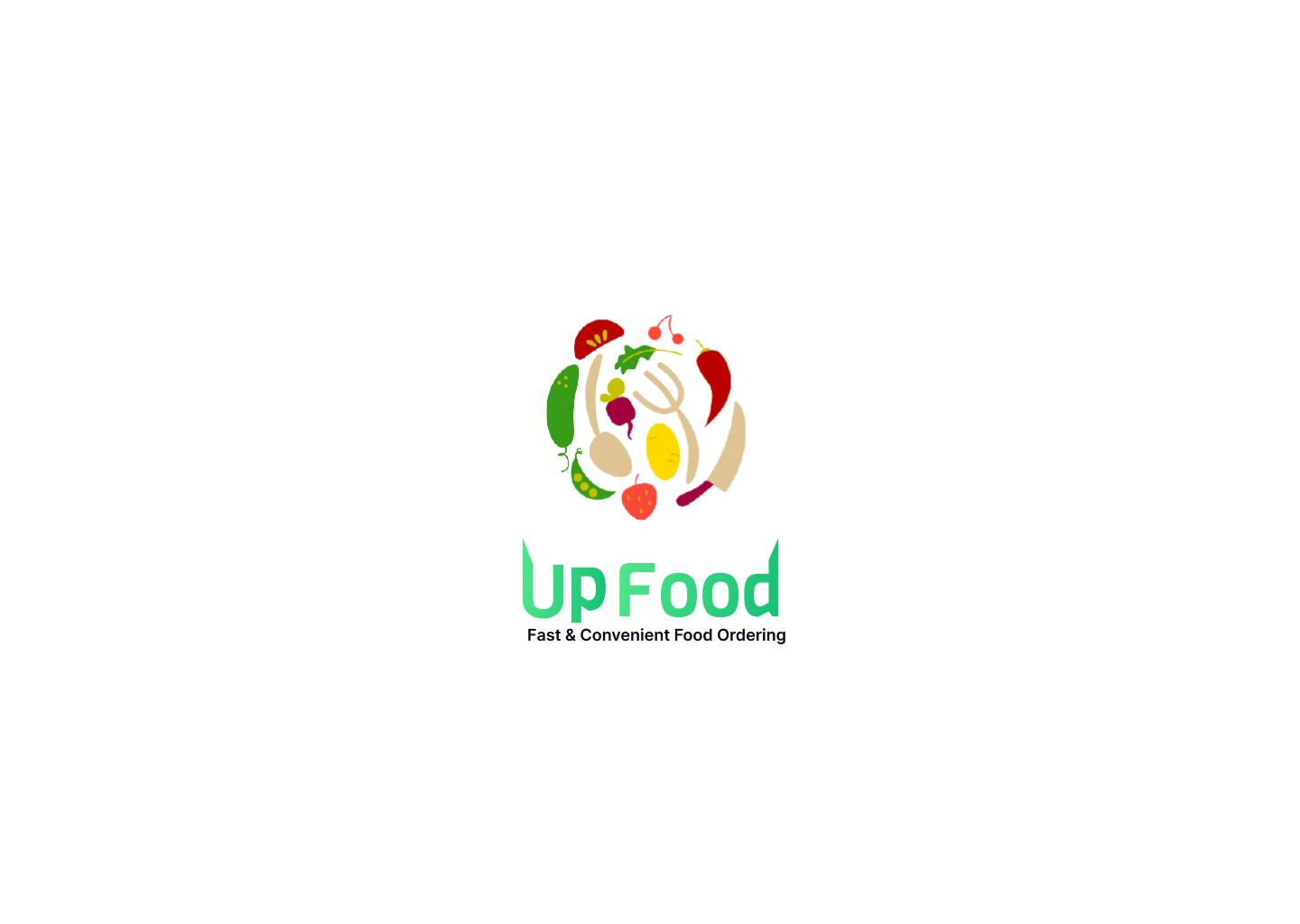
Platform: Mobile application.
Problem statement: Residents in tertiary institutions are very busy and due to their busy schedules, a few of them order their meals from vendors, but most times they get disappointed by the vendors.
Process
We used a modified version of Google Ventures Design Sprint to ensure that our solutions are grounded in research, aligned with the core objectives, created with passion, and delivered with precision.
Step 1 (Understand)
We synthesized all the available research data to find common issues among the target users. Data that we analyzed included forums, case studies etc.
Questions
We started our design process in text, asking whichever questions come to mind, and jotting down any ideas or assumptions we find.
This helps us uncover a larger range of opportunities than when we start projects visually.
On reading the prompt, there were a few questions that came to mind immediately.
- Is this a problem worth solving?
- What are the most effective methods of increasing customer satisfaction?
- What kind of vendors/customers are going to use this?
- Do they have major differences in how they’d utilize this experience?
- What are we optimizing for? What does success look like?
How Might We?
We re-framed our insight statements as How Might We questions to turn those challenges into opportunities for design.
‘’How might we questions'’ gave us the perfect frame for innovative thinking.
- How might we help vendors increase customer satisfaction?
- How might we craft a seamless experience for both the customers and the vendors?.
- How might we validate the feasibility of the product?
Step 2 (Define)
Goal
To craft a seamless experience that'll help residents of tertiary institutions order the best meals from their favorite restaurants.
Target audience
The ideal users of this experience are residents of tertiary institutions and food vendors in this geographical location.
User persona
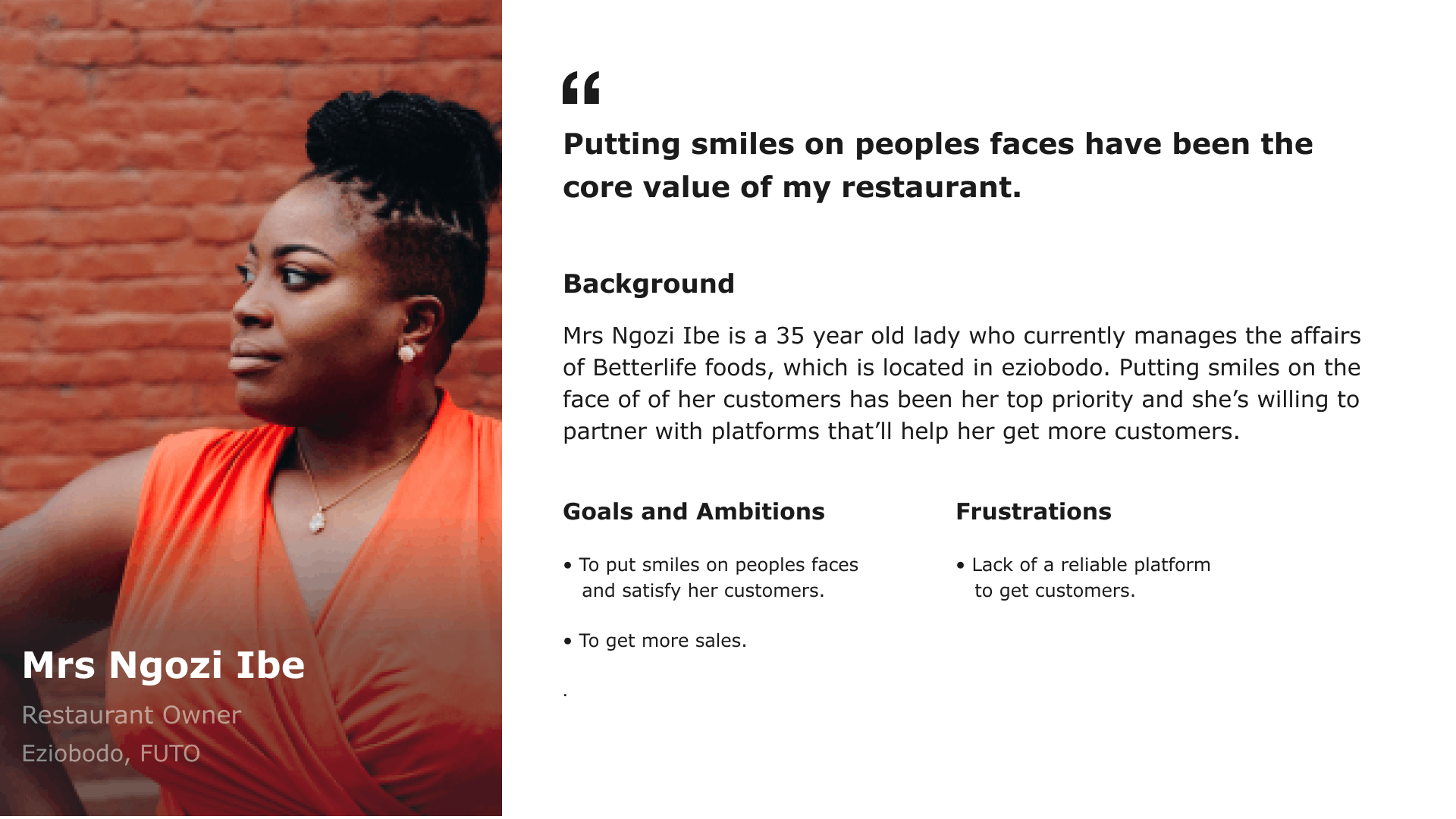
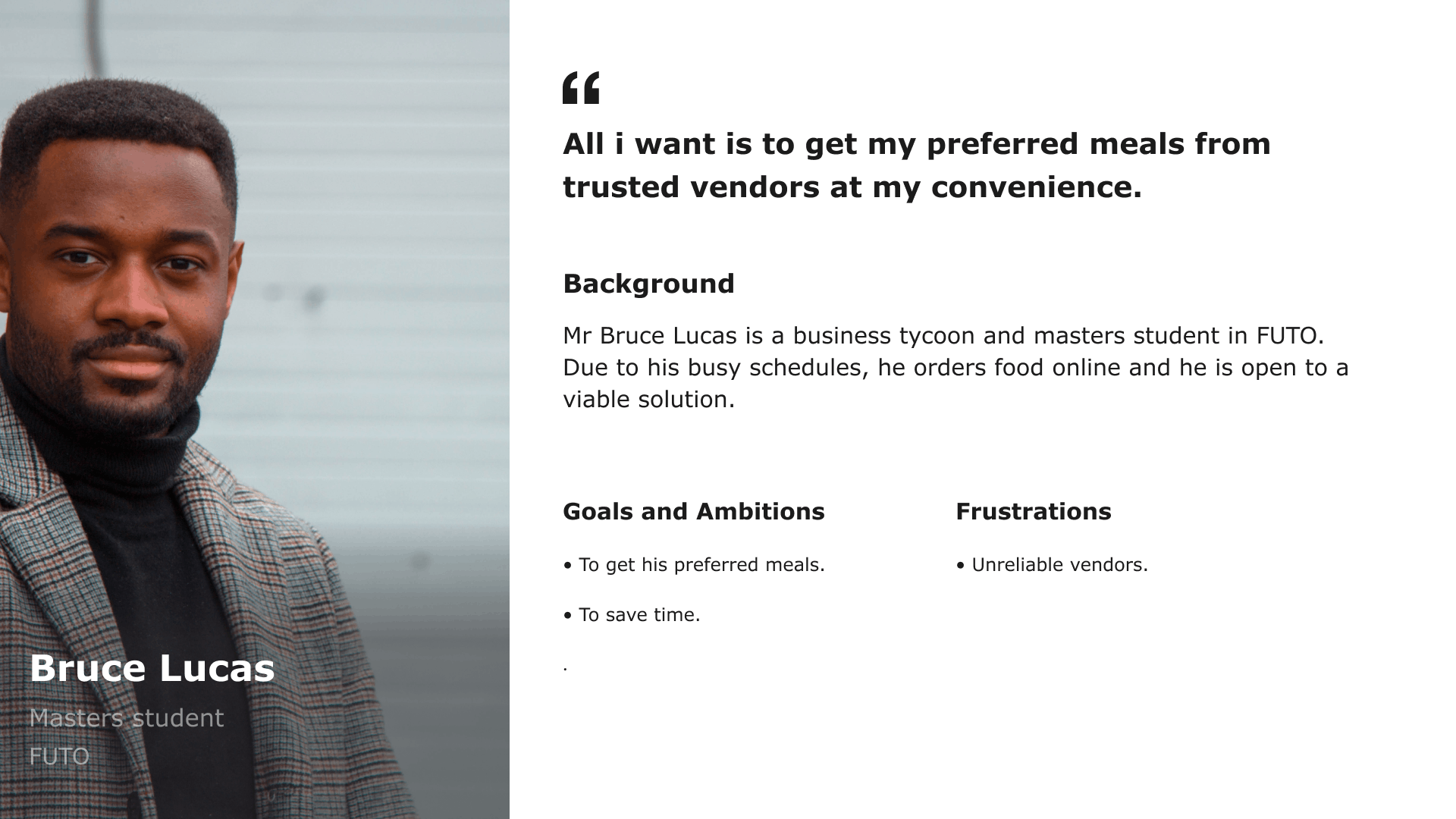
Step 3 (Prototype and Design)
In an ideal sprint scenario, the team is supposed to make a Lo-Fi prototype of the product, but we proceeded to make a fully functional Hi-fi prototype.
Step 4 (Initial Validation)
We conducted initial validation sessions with over 50 participants that fit into the target audience of this experience.
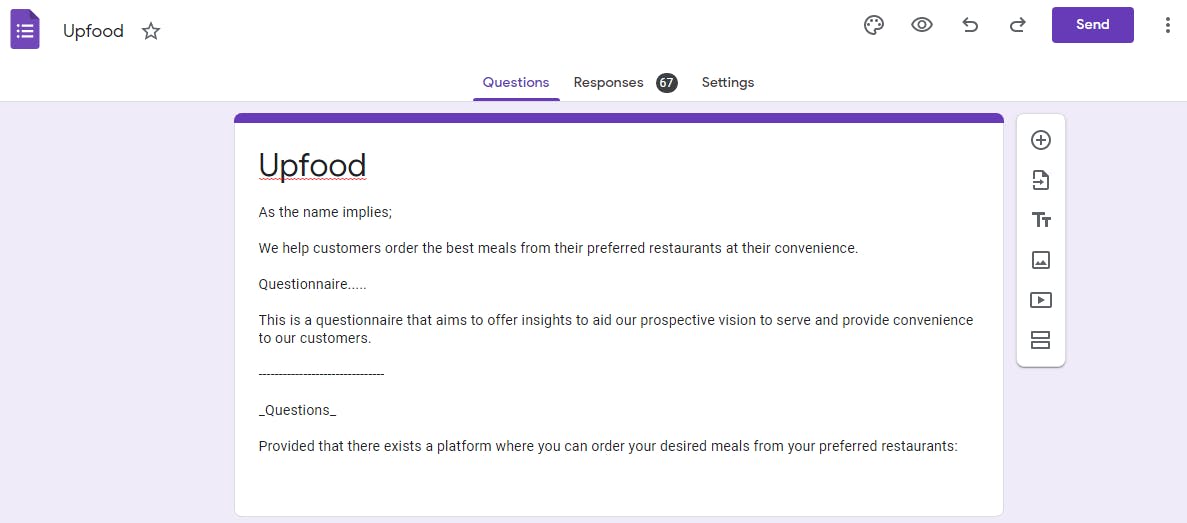
Results
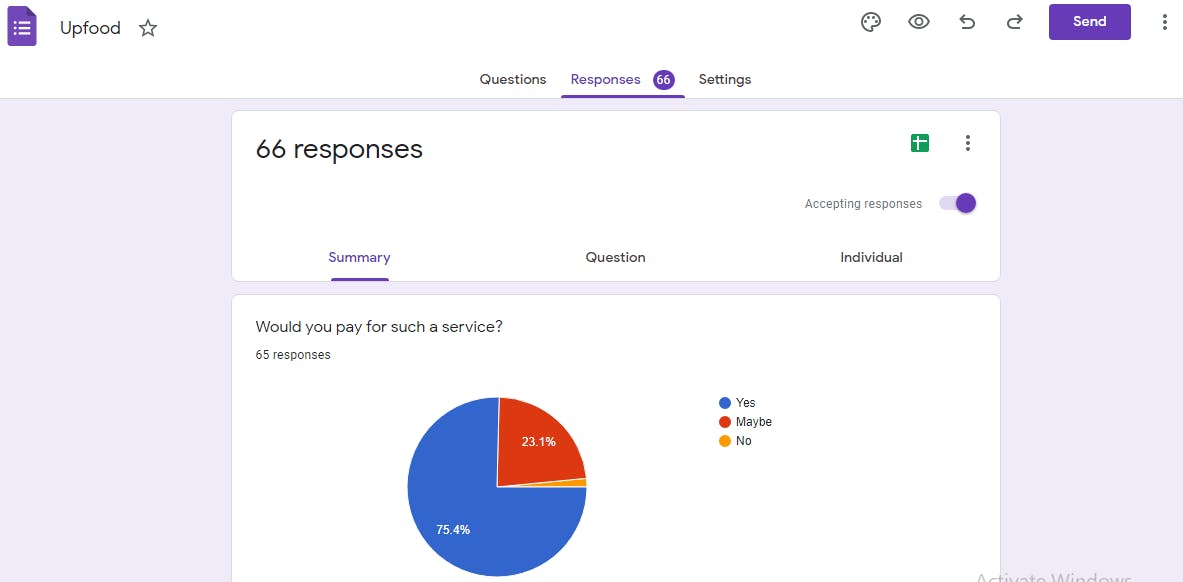
Our favorite step:
Brainstorming on our one-liner: This helped us validate our initial assumptions & the effectiveness of my solution.